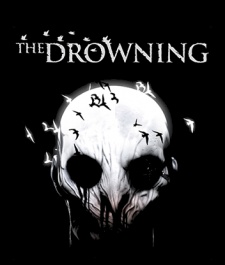Having earlier caught the industry's eye at the EA-owned Digital Illusions CE better known as DICE in Sweden, Cousins joined publisher ngmoco almost two years ago to the day, with the goal of serving up freemium releases for the firm's owner DeNA.
Cousins' key differentiator, however, was that he wanted to launch freemium releases that still encapsulated the look and feel of a 'premium' game. And so steps up The Drowning.
In our latest 'making of', we caught up with Cousins to cast more light on the journey behind The Drowning, and why a desire to shake up FPS controls and follow the freemium path made the game notorious even before it hit the digital shelves.
Meet the market
"I have a background in free-to-play shooters at EA," Cousins tells us.
"I played N.OV.A. 2 on my original iPad and I was struck by what a good format it was to play shooters - holding this high resolution screen close to my face reminded me of leaning into a PC monitor.
"The issue I had with N.O.V.A. was that the controls were horrible and it wasn't suited to the type of session length I had on mobile. I spent ages waiting for save points."

Ben Cousins
Cousins said the issues he perceived to be N.O.V.A.'s biggest problems were confirmed by market research just a few months after joining ngmoco market research that helped highlight the wider gripes mobile gamers have with the FPS genre on mobile.
"There was interest from core gamers in playing a shooter on mobile, but they hated virtual stick controls," adds Cousins.
"We chose freemium because we are in search of hits, and the hits on mobile are freemium."
Buoyancy
Not only was The Drowning a reaction to existing mobile first-person shooters, then, but Cousins also felt core gamers' tastes still weren't being fully catered for on mobile.
"Our research - even two years ago - told us half of core gamers had smartphones or tablets," explains Cousins. "But they were stuck playing casual and cartoony games."
The Drowning, instead, plumps for a serious, apocalyptic visual design and story.
Yet the visuals and the story often feel at odds with the gameplay, which is fast-paced and arcade style, bite-sized chunks. In cut-scenes, music plays moody strings and monologues are delivered po-faced, yet - in-game - the music, mixed with the point scoring, leads to an upbeat, somewhat surreal feel.
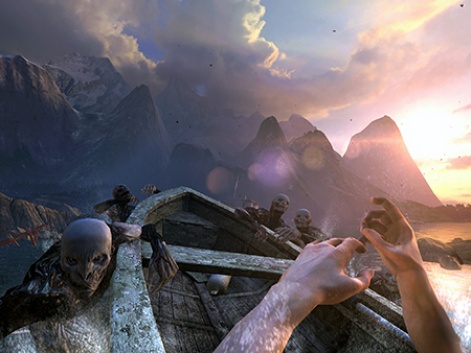
"For the music we wanted to choose instruments and instrumentation that would make sense in an apocalyptic world," Cousins says.
"We actually ended up with a similar orchestration to The Last of Us. However, with our high-action arcade gameplay we decided something more upbeat would be needed.
That "high level gameplay" direction, as Cousins describes it, was part of the developer's desire to make a mobile game that core gamers could feel comfortable with.
Nonetheless, Cousins notes that the mobile element of The Drowning was just as important as the core element: "This is why most of the game mechanics - score based, star system, collection and crafting mechanic - are as they are... i.e. mobile-style.
"The alternative is that we tone down everything and fail to engage gamers or give them appropriate mechanics for mobile," Cousins explains. "Or we create a casual, cartoony shooter that doesn't interest the target audience.
"I think a lot of ARMA fans would find Call of Duty arcade-y, but Infinity Ward chose that high-drama unrealistic path because it was appropriate for the platform."
Gasping for air
Work on The Drowning started properly in January 2012, with just seven staff on board at the studio behind the game - Scattered Entertainment - to begin with.
Staffing then ramped up, and by the time the game shipped Scattered was a twenty-strong team - the number fluctuating occasionally due to use of contractors.
While mobile games on the whole tend to be produced by tight-knit groups, for Cousins, it was important that the desire to produce a premium release was reflected in the number of staff working on the title.

"Our team was about the size you'd have for an FPS back when consoles or PC were as powerful as iPads are now," Cousins explains.
"The first Xbox teams were in their twenties and the fourth generation iPad is somewhere between that and the Xbox 360 in power.
"One of the things we focus on, is doing justice the the power of modern mobile devices. Pushing them as hard as they will go. To do this, we needed more staff than your average team. We focus our efforts on engaging gamers who are searching for high end visuals, among other elements.
"There are lots of teams trying to push visuals. I think the level of interest in games like The Drowning, Real Racing and Infinity Blade supports the idea that downloads can be driven by visuals among other aspects."
The Drowning's art team alone often hit double figures staff wise the aforementioned contractors taken into account and, indeed, even a cursory look at the game's visuals suggest graphics were a huge focus for Scattered Entertainment as part of the studio's move to grab a slice of the core market.
"We wanted to try and build the best looking game on the platform at launch," remembers Cousins. "We thought this would help drive downloads and I think we did a reasonable job of fulfilling that goal."
The environmental design is a stunning on a high resolution screen, with the character models passable, but not as remarkable.
When asked about the usual drop in quality between environmental and character design in mobile first-person shooters, Cousins explains that it's usually a case of a trade off between the two.
The character models for The Drowning were built by a Hollywood SFX specialist, which has worked on blockbuster films such as World War Z.
Outside of the visuals, however, the team also wanted to nail the feel of an FPS, setting out to create a control system that perhaps for the first time felt specifically tailored towards touchscreen play.
Rolling in the deep
"After the research was complete, we had no coders," says Cousins, "but I hired a consultant called William Ravaine, who I had worked with at EA.
"I had an idea in mind for the controls - I made a video of me touching the screen on my monitor along with videos of me playing Counter-Strike. The current control scheme is very close to the one I had in that video. William and I set about prototyping this system in Unity."
Indeed, even critics of The Drowning would have to admit that, if it was Cousins' intention to deliver FPS controls that broke the mould on mobile, he certainly achieved that aim.
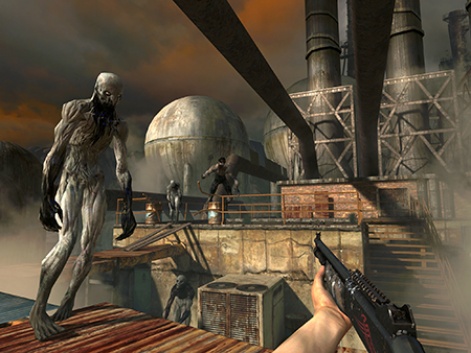
Set to default, The Drowning opts not for virtual sticks but rather a mixture of taps and swipes for navigation. Shooting is achieved by tapping the screen with two fingers - the middle point between them being the place the bullet lands.
Cousins did consider implementing iPhone and iPad's tilt functionality, but eventually decided that it would cause physical straining.
"We wanted a system that would work on buses, trains etc," explains Cousins. "At a high level, after not too long, we realised that we should focus on only using inputs that are commonly used in the OS navigation on iOS. We trusted Apple's judgment in that area.
"We also wanted fairly dumb AI just to make sure the game was playable with the people getting to grips with the new control system, but having said that - coding the AI for enemies that only do melee damage is pretty hard.
"Combining that with animation-driven movement is also a technical challenge."
Although the team had invented a new control system fostered by the consumer backlash against virtual sticks indicated by market research, The Drowning still sports the option to switch back to virtual controls thanks to advice offered up by Apple.
"They suggested it would make sense not to exclude the existing audience of games like Dead Trigger and the Gameloft titles," Cousins says. "The analogy I make is the original Halo. It reinvented how shooters play on console, but you also had the option to choose the GoldenEye control scheme.
"I think the number of people choosing the GoldenEye controls in Halo games is decreasing over time, but it made sense to implement it ten years ago."
Not that Cousins thinks The Drowning will have quite the same impact as Halo, of course.
"I wouldn't be so arrogant as to go that far," admits Cousins. "We see ourselves, what the Deus Ex team did and what Industrial Toys will use as steps in the right direction."
A matter of control
It's still relatively early days for mobile FPS games and developers are still experimenting with controls, innovating and tweaking, searching for the perfect setup.
The biggest challenge they face, many argue, is solving the problem of the player's fingers taking up a large swathe of the screen.
"Personally, I don't think that's a solvable problem," Cousins states.
"Every change in platforms brings about compromises, and you just hope the benefits of the new platform outweigh them. We looked at eye tracking data and took into account the tiny area of detailed vision human beings have in the form of the fovea [part of the eye].
"While hands look like they get in the way if you watch someone else play, when playing yourself, many users report they don't notice their hands as they are focusing on other things on screen.
"Bear in mind we are a tablet first team, so we acknowledge that phones are not the best platform for these games."
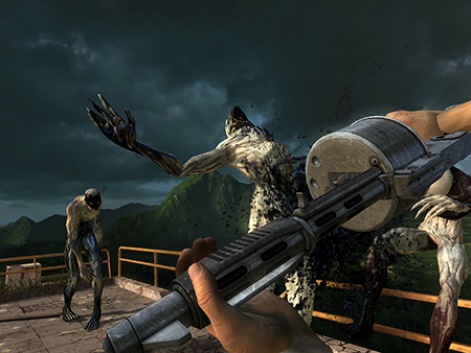
There were some problems during development that the team did manage to overcome, however.
"We needed to learn the specific constraints of these devices," says Cousins. "Mobile is different in architecture to console or PC. They are stronger in some areas - more RAM and often faster loading - and weaker in others GPU and CPU. It took us time to find those limits.
"In terms of design it took us ages to find a balanced blend of shooter gameplay and the Japanese style monetisation mechanics that were being suggested by the amazingly talented guys in DeNA Japan. Of course, building all fifty weapons took time, too."
Down with the sickness
It was in the monetisation model where the team faced the majority of their difficulties, however.
"Blending FPS design and Japanese style monetisation and retention systems took a lot of iteration, testing and advice from experts within the company," he says.
DeNA, as a company, only make F2P games and Cousins admits he has no interest in ever switching to developing premium titles.
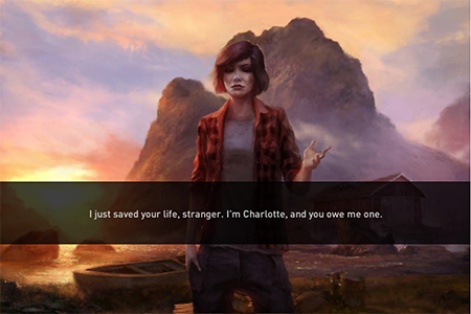
"I joined DeNA because they are one of the world's experts in this model," explains Cousins. "I'm interested in working on hits that reach the widest possible audience.
"I've been working in freemium since 2006, so it's comfortable for me. I believe that the 'race to the bottom' will continue and freemium will become even more prevalent across all platforms in the future so, in a way, I'm trying to future proof my career.
"From a design point of view it's much more challenging and there is a lot more to learn that traditional game design."
With free-to-play, however, comes the responsibility to ensure your monetisation systems can't be exploited. For this reason, The Drowning requires an internet connection to play.
Cousins says there were two reasons for the game requiring an internet connection - one positive and one negative.
"The negative is to prevent people fraudulently getting access to in-game items by validating all game events on a server," explains Cousins. "The positive is collecting detailed anonymous data on people's gameplay patterns to continually improve the service."
Future focus
For now, Scattered Entertainment is 100 percent focused on supporting The Drowning in the short-term. Looking ahead, however, continued support will perhaps predictably depend on just how popular the game proves to be.
There are plans to introduce an asynchronous multiplayer element to the game in the coming weeks, where players take it in turns to chip away at a bosses' health bar for what Cousins says will be rare and powerful loot.
Scattered is also looking to port the game to additional devices - regardless of the pains the team already endured optimising the game for iPhone 4, which Cousins notes "took three guys about three months" to complete with Android high on the agenda, but, again, any future plans depend on how The Drowning is received commercially.
"The Android port is close to completion," reveals Cousins. "We'll complete that once we are happy that the game was a success on iOS and it warrants a port.
"We have a short term plan of updates that we are working on right now, all driven by user feedback.
"At the moment I'm testing the addition of sticky aiming to our virtual stick controls - this has been a request from users. We are also improving the map screen and doing some tuning. Whether there is long-term support really depends on the level of success the game has in the first months after launching."
The Drowning's future as a commercial entity would appear to still be in the balance, then, but it's Cousins' belief that, whatever happens, the game will have a legacy.
Whatever comes next for Scattered Entertainment and even DeNA as a whole, however, it's likely future games won't stray all too far from the template fleshed out within The Drowning.

